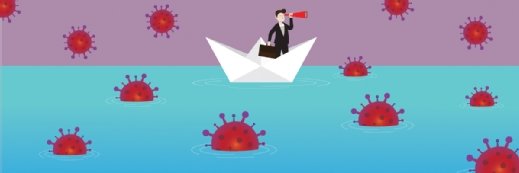
SFIO CRACHO - stock.adobe.com
County-Level Data Reveals Factors Related to COVID-19 Disparities
Diabetes, obesity, and household crowding lead to COVID-19 disparities among patient populations, according to recent analyses of county-level data.
In order to understand the reasons behind COVID-19 disparities, healthcare organizations are increasingly conducting county-level data analyses in communities across the US.
For more coronavirus updates, visit our resource page, updated twice daily by Xtelligent Healthcare Media.
In partnership with Aetna, US News and World Report recently released its Healthiest Communities Rankings report. The annual report measures health-related components to empower public health officials and citizens to make decisions that can improve health and wellness.
The report included county-level information on COVID-19 and other related factors, such as case rates, unemployment rate, and ICU beds. The report noted that several groups are at higher risk of dying from the virus, including older adults and those with underlying health conditions like diabetes, obesity, and heart disease.
The report stated that an estimated 2.69 million people in the US had diagnosed diabetes in 2018, and rates are higher among communities of color. The condition is also a leading cause of death in the US, researchers noted.
“Conditions associated with diabetes – such as obesity and cardiovascular disease – place people at increased risk of severe illness from COVID-19. Diabetes rates increase with age, and people who are older are also more at risk of severe illness,” the report said.
“Diabetes appears linked to ideal conditions at the cellular level for infection by the novel coronavirus. Inflammation already present in diabetic patients may be compounded by the body’s immune response to the virus, leading to poorer outcomes.”
Obesity is also a prevalent, potentially deadly condition in the US. The report noted that approximately 40 percent of Americans are obese, and the disease is most prevalent in the South and Midwest. Like diabetes, the condition is more prevalent among black and Hispanic populations.
“Obesity alone can make breathing more difficult and increase inflammation, complicating cases of COVID-19. Conditions associated with obesity, such as diabetes and cancer, also place people at increased risk of severe illness from COVID-19, and the condition can make medical care such as intubation more challenging,” the report said.
Risk of severe COVID-19 illness is also high among cost-burdened households – meaning housing costs such as mortgage, rent, utilities and taxes account for 30 percent or more of household income. Individuals living in these situations often work in industries impacted by social distancing and stay-at-home orders.
These findings align with those of a recent study conducted by a team from the Harvard T.H. Chan School of Public Health. Researchers analyzed county-level and ZIP code-level data on COVID-19 outcomes – including deaths, confirmed cases, and percent positive cases – in New York City and Illinois.
Using a geocoding approach, which links routinely collected public health data to neighborhood socioeconomic factors, the group found consistently higher rates of COVID-19 illness and death among people living in more disadvantaged communities.
County-level data showed higher rates of COVID-19 deaths in areas with more people living in poverty, increased household crowding, and more people of color. In fact, in counties with the highest percentage of people of color, the COVID-19 death rate was about five times higher than in other ZIP codes.
“Our study provides evidence of stark social inequities in COVID-19 outcomes at both the county and ZIP Code levels in the United States,” said Jarvis T. Chen, ScD, of Harvard T.H. Chan School of Public Health, Boston. “These marked disparities speak to how the COVID-19 pandemic is affecting vulnerable populations and exacerbating existing health inequities.”
The research team stated that their results demonstrate the importance of real-time data to help identify community groups at highest risk of COVID-19 infection, serious illness, or death. According to the team, routinely collected public health data includes little or no information on socioeconomic factors that can have an important impact on COVID-19 risks. Additionally, data on race and ethnicity is more often collected but is missing for many patients.
The team noted that the geocoding approach could prove beneficial in identifying communities most in need during the COVID-19 pandemic and beyond.
“Our cost-effective straightforward methodology and results can motivate and guide state and local health departments to generate data relevant to monitoring inequities in COVID-19 outcomes and guiding resource allocation to mitigate these inequities,” Chen said.
The results from both US News and World Report and the Harvard public health study reveal the deep-rooted issues behind COVID-19 disparities, and highlight opportunities for decision-makers to improve these situations.
“Looking across the US, people living in the most impoverished, crowded, and racially and economically polarized counties are experiencing substantially elevated rates of COVID-19 infection and death,” Harvard researchers stated.





